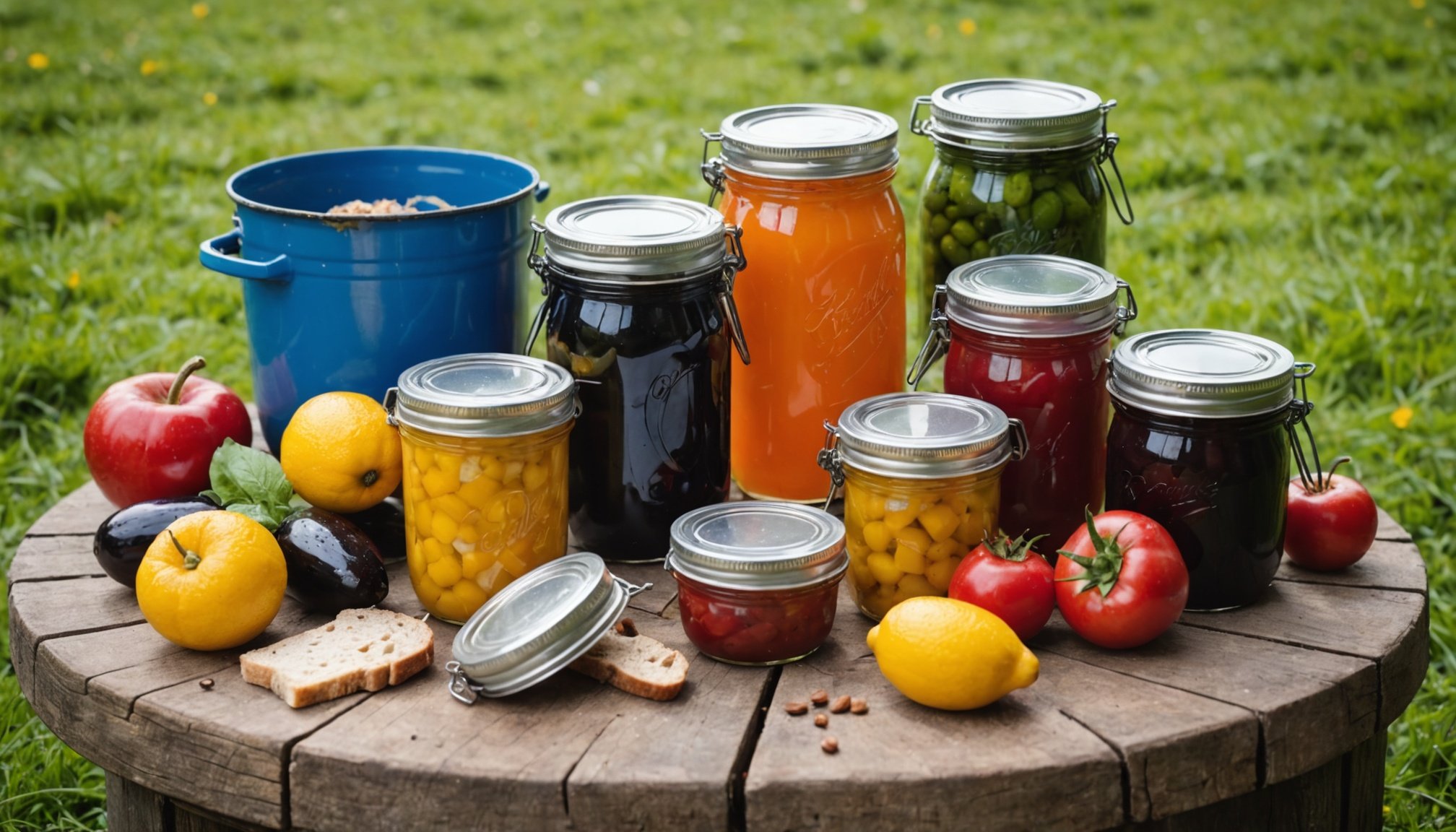Ultimate Guide to Safely Preserving Perishable Foods on Your UK Camping Trip
When venturing into the great outdoors for a camping trip, one of the most critical aspects to consider is how to preserve your food, especially perishable items. Proper food storage and preservation are not only essential for maintaining food safety but also for ensuring you have a steady and nutritious food supply throughout your adventure. Here’s a comprehensive guide to help you navigate the world of camping food storage and preservation.
Understanding Food Safety
Before we dive into the specifics of food preservation, it’s crucial to understand the basics of food safety. Food safety is about preventing the growth of harmful bacteria, which can cause foodborne illnesses. Perishable foods, such as meat, dairy, and eggs, are particularly vulnerable to bacterial growth.
“Food safety is not just about following rules; it’s about ensuring that the food you eat is safe and healthy. When camping, this becomes even more critical because you’re often in remote areas with limited access to medical facilities,” says Alex Roddie, an experienced outdoor enthusiast and writer for TGO Magazine[1].
Choosing the Right Foods
When planning your camping trip, the type of food you choose can significantly impact your food preservation efforts. Here are some tips on selecting the right foods:
Non-Perishable Foods
Non-perishable foods are ideal for camping because they have a long shelf life and do not require refrigeration. Examples include:
- Canned goods (vegetables, meats, soups)
- Dried fruits and nuts
- Energy bars
- Dehydrated meals (like those from Firepot or Basecamp Food)[1][5]
Perishable Foods
If you still want to include perishable foods in your camping diet, you need to ensure they are stored properly. Common perishable foods for camping include:
- Meat (sausages, steaks)
- Dairy products (cheese, milk)
- Eggs
- Fresh fruits and vegetables
Storage Solutions
Proper storage is key to preserving perishable foods. Here are some essential storage solutions you should consider:
Coolers
Coolers are a must-have for any camping trip involving perishable foods. Here are a few tips for using coolers effectively:
- Ice Packs: Use ice packs or even frozen water bottles to keep your cooler cool. You can also use dry ice for longer trips.
- Organization: Keep raw meat and dairy products separate from other foods to prevent cross-contamination.
- Sealing: Ensure your cooler is well-sealed to maintain the cool temperature inside.
Airtight Containers
Airtight containers are great for storing non-perishable foods and keeping them fresh. Here’s why:
- Moisture Protection: Airtight containers protect your food from moisture, which can cause spoilage.
- Pest Control: They also keep pests like rodents and insects away from your food.
Dry Bags and Ziploc Bags
Dry bags and Ziploc bags are versatile and can be used for a variety of food storage needs:
- Waterproofing: Dry bags are perfect for keeping your food dry in wet conditions.
- Portability: Ziploc bags are lightweight and easy to carry, making them ideal for snacks and small food items.
Cooking and Preparation
Cooking and preparing your meals safely is another crucial aspect of camping food management.
Cooking Equipment
The right cooking equipment can make a big difference in your camping experience. Here are some essentials:
- Stove: A lightweight stove like the SOTO Windmaster or MSR Pocket Rocket is perfect for boiling water and cooking meals[2].
- Cookware: Compact pots and pans, along with lightweight utensils, are essential for preparing meals.
- Fuel: Always carry extra fuel canisters to ensure you don’t run out during your trip.
Food Preparation Tips
Here are some tips for preparing your meals safely:
- Hygiene: Wash your hands frequently, especially before handling food.
- Separation: Keep raw meat separate from other foods to prevent cross-contamination.
- Cooking Time: Make sure to cook your food thoroughly to avoid foodborne illnesses.
Freeze-Dried and Dehydrated Meals
Freeze-dried and dehydrated meals are excellent options for camping because they are lightweight, have a long shelf life, and are easy to prepare.
Benefits of Freeze-Dried Meals
- Lightweight: Freeze-dried meals are significantly lighter than fresh foods, making them ideal for backpacking.
- Long Shelf Life: These meals can last for years if stored properly.
- Easy Preparation: Most freeze-dried meals just require boiling water to rehydrate.
Examples of Good Brands
- Firepot: Known for their high-quality ingredients and clear instructions[1].
- Basecamp Food: Offers a variety of meals with great texture and flavor[1].
- Harmony House: Provides a range of dehydrated and freeze-dried ingredients for DIY meals[5].
Table: Comparison of Popular Camping Meal Brands
| Brand | Price Range | Weight | Calories | Calories/100g | Time to Hydrate | Dietary Options | Allergens |
|---|---|---|---|---|---|---|---|
| Firepot | £8.49 – £9.49 | 135g – 159g | 575 – 800 | 425.9 – 503.1 | 7 – 15 minutes | Vegan, Vegetarian, Dairy Free | Wheat, Celery |
| Basecamp Food | £8.99 | 127g | 600 | 472.4 | 7 minutes | Vegetarian, Dairy Free, Gluten Free | None |
| Harmony House | Varies | Varies | Varies | Varies | 10 – 15 minutes | Vegetarian, Gluten Free | None |
Additional Tips for Camping Food Safety
Here are some additional tips to ensure your food remains safe and fresh throughout your camping trip:
Keep It Cool
- Use coolers with ice packs to keep perishable foods cool.
- Store coolers in shaded areas to maintain the cool temperature.
Use Airtight Containers
- Store non-perishable foods in airtight containers to keep them fresh.
- Use airtight containers for leftovers to prevent spoilage.
Label and Date Your Food
- Label your food items with the date they were stored.
- Consume the oldest items first to ensure nothing goes bad.
Follow Leave No Trace Principles
- Dispose of food waste properly to avoid attracting wildlife.
- Follow local regulations regarding food disposal and storage.
Winter Camping Considerations
If you’re planning a winter camping trip, there are additional considerations to keep in mind:
Cold Weather Storage
- Use insulated coolers and extra ice packs to keep foods cool in cold weather.
- Store food in airtight containers to protect from moisture and cold.
Increased Caloric Needs
- Plan for higher caloric intake during winter camping trips.
- Pack extra snacks and meals in case the trip takes longer than expected[3].
Preserving perishable foods on a camping trip is a challenge, but with the right strategies and equipment, it can be done safely and effectively. Whether you’re opting for non-perishable foods, using coolers and airtight containers, or relying on freeze-dried meals, the key is to plan ahead and follow best practices for food safety.
By choosing the right foods, using appropriate storage solutions, and following safe cooking and preparation practices, you can ensure a safe and enjoyable camping experience. Remember, your food supply is essential for your survival and comfort during the trip, so make sure to prioritize it.
Happy camping




















